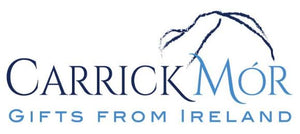Coole Park and the Autograph Tree

 Coole Park and the Autograph Tree
Coole Park and the Autograph Tree
In the gentle heart of County Galway lies Coole Park, once the estate of Lady Augusta Gregory, dramatist, folklorist, and co-founder of the Abbey Theatre. For much of the late 19th and early 20th centuries, this quiet woodland was more than a private estate—it was the beating heart of the Irish Literary Revival. Here, under the shade of trees and the watchful eye of its gracious hostess, some of Ireland’s greatest literary minds gathered to share ideas, stories, and dreams for a new national culture.
The estate itself was a blend of cultivated beauty and wild charm: serene lakes, meadows threaded with wildflowers, and winding woodland paths that seemed to lead into legend. At its center stood Coole House, now gone, but once alive with conversation, laughter, and the clink of teacups. Yeats, Synge, Shaw, O’Casey, and many others found both hospitality and inspiration here. Lady Gregory’s deep commitment to preserving Irish folklore and promoting Irish arts made Coole Park a refuge for creativity.

Discussions at Coole did not remain confined to the drawing room. Lady Gregory, Yeats, and Edward Martyn co-founded the Abbey Theatre in Dublin, which became the national stage for Irish drama. Plays rooted in Irish history and folklore—such as Yeats’s Cathleen Ní Houlihan and Synge’s The Playboy of the Western World—were first nurtured through the friendships and collaborations born at Coole. Through the Abbey, the Celtic Revival moved from private salons to public performance, giving voice to a distinctly Irish cultural identity that resonated far beyond Galway.
It was at Coole that many of Yeats’s greatest ideas were nurtured. He referred to the estate as “the most beautiful place in the world,” and wrote some of his most enduring works while staying there. In his poem The Wild Swans at Coole (1917), the lake and its birds became symbols of beauty, change, and the passing of time.

Amid this landscape stands one of the most unusual literary monuments in the world: the Autograph Tree. In 1898, two years after Lady Gregory inherited the estate, the poet George Bernard Shaw suggested carving their names into a great copper beech in the walled garden. The idea caught on, and over the years, visiting writers and artists added their own signatures. Today, the weathered bark holds the carved names of W.B. Yeats, John Millington Synge, Sean O’Casey, Douglas Hyde, Edward Martyn, and, of course, Lady Gregory herself. It is a living guestbook, its letters grown deep and gnarled into the wood, as if time itself has signed its name there.
The Autograph Tree is more than a curiosity—it is a testament to a moment in Irish history when art and politics intertwined, when the revival of the Irish language, the establishment of a national theatre, and the creation of new literature all seemed part of the same great work. The tree has outlived its carvers, but their work continues to ripple through Irish culture.

Today, Coole Park is a nature reserve, its paths open to walkers, its swans gliding over Coole Lake much as they did when Yeats immortalized them in “The Wild Swans at Coole.” Visitors can still find the Autograph Tree in the walled garden, its inscriptions weathered but legible, and stand in the same space where these writers once strolled, debated, and dreamed. The air still holds a sense of quiet reverence, as though the place remembers.
In a way, the Autograph Tree serves the same role as a poem—it fixes a moment, a feeling, and a set of people in time, yet allows them to live on and be discovered anew. In the shade of its copper leaves, one feels both the weight of the past and the living presence of the voices that shaped it. Coole Park remains, as it was in Lady Gregory’s time, a meeting place—this time, not for the writers themselves, but for those who come seeking the spirit they left behind.
The Wild Swans at Coole, by W.B. Yeats (1917)
The trees are in their autumn beauty,
The woodland paths are dry,
Under the October twilight the water
Mirrors a still sky;
Upon the brimming water among the stones
Are nine-and-fifty swans.
The nineteenth autumn has come upon me
Since I first made my count;
I saw, before I had well finished,
All suddenly mount
And scatter wheeling in great broken rings
Upon their clamorous wings.
I have looked upon those brilliant creatures,
And now my heart is sore.
All's changed since I, hearing at twilight,
The first time on this shore,
The bell-beat of their wings above my head,
Trod with a lighter tread.
Unwearied still, lover by lover,
They paddle in the cold
Companionable streams or climb the air;
Their hearts have not grown old;
Passion or conquest, wander where they will,
Attend upon them still.
But now they drift on the still water,
Mysterious, beautiful;
Among what rushes will they build,
By what lake's edge or pool
Delight men's eyes when I awake some day
To find they have flown away?



